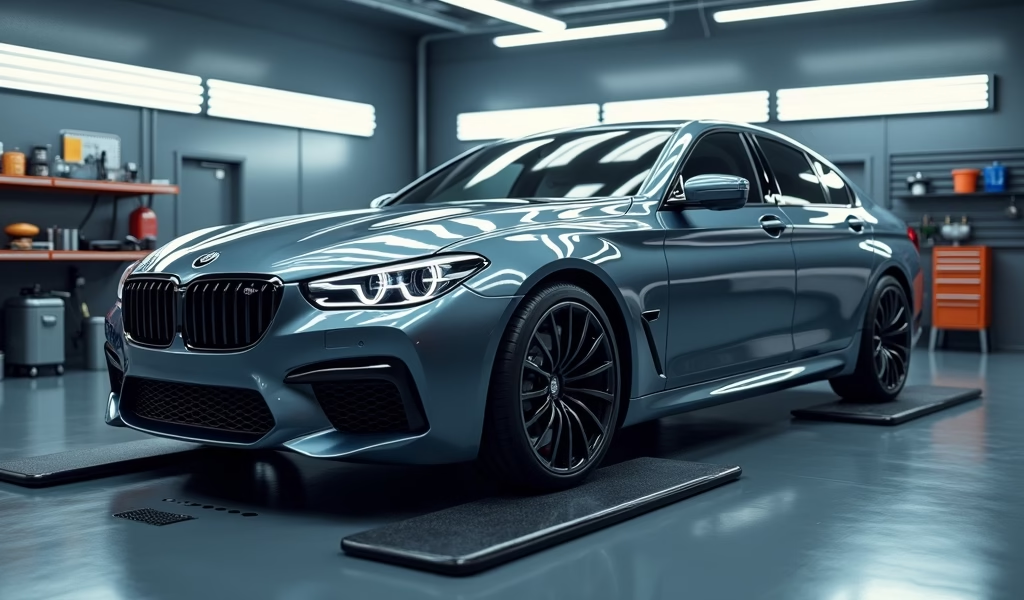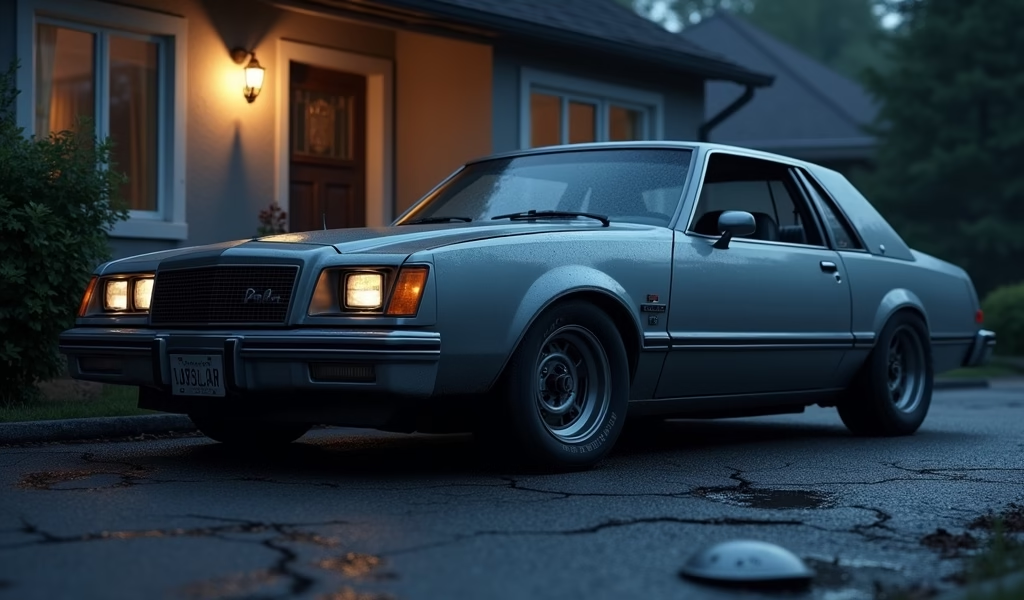Overview
Car Store USA shares five essential DIY car maintenance techniques that save money while extending vehicle life, including headlight restoration with toothpaste, minor scratch removal, proper tire care, interior protection methods, and safe engine bay cleaning. These professional-grade hacks help prevent small issues from becoming costly problems and maintain vehicle value over time, emphasizing that regular maintenance is an investment rather than emergency intervention.
Table of Contents
- Introduction to Car Care Hacks from Car Store USA
- DIY Headlight Restoration: Bringing Back the Light
- The Toothpaste Touch-Up Trick: Erasing Minor Scratches
- Optimal Tire Maintenance: Where the Rubber Meets the Road
- Dashboard and Interior Protection: Preserving Your Vehicle’s Cabin
- Engine Bay Cleaning Secrets: Under the Hood Magic
- Conclusion: Maintaining Your Vehicle’s Long-Term Health
- Frequently Asked Questions
Introduction to Car Care Hacks from Car Store USA
After 25 years turning wrenches and helping folks keep their rides running smooth, I’ve learned that proper car care doesn’t need to drain your wallet or consume your weekend. At Car Store USA, we believe everyone deserves to know the insider tricks that can extend vehicle life and save serious cash in the process.
Most drivers I meet at our Car Store USA locations come in thinking their vehicle issues require expensive solutions. Often, they’re surprised when I show them simple maintenance hacks that cost pennies on the dollar compared to letting problems progress. These preventative measures not only save money but can significantly extend your vehicle’s lifespan.
I’ve compiled five of my favorite professional-grade maintenance tricks that we regularly share with customers at Car Store USA locations nationwide. These aren’t just quick fixes—they’re smart, preventative measures backed by automotive science and decades of hands-on experience.
Let’s roll up our sleeves and get to the good stuff—no fancy equipment required, just practical know-how that works.
DIY Headlight Restoration: Bringing Back the Light
I can’t tell you how many folks pull into Car Store USA with headlights so cloudy they’re practically driving blind at night. Those foggy, yellow headlights aren’t just an eyesore—they’re downright dangerous, reducing your visibility by up to 50% according to NHTSA safety studies.
The culprit? Oxidation from UV rays breaks down the plastic lens coating over time. The good news is you don’t need professional help for this one—the solution might already be sitting in your bathroom.
Here’s my tried-and-true method that I’ve personally used on hundreds of vehicles:
- Regular white toothpaste (not gel—you want the mild abrasives)
- Baking soda
- Clean microfiber cloths
- Water
- UV sealant (optional but highly recommended)
The restoration process is straightforward:
- Thoroughly clean the headlight surface with soap and water
- Create a paste mixing toothpaste with a pinch of baking soda
- Apply the mixture using circular motions with your microfiber cloth
- Work the paste for about 5 minutes per headlight, adding light pressure
- Rinse completely and dry with a clean cloth
- Apply a UV sealant to prevent re-oxidation (this step is crucial)
What makes this work is the mild abrasives gently removing the oxidized layer without scratching the plastic. I’ve seen headlights go from dull yellow to crystal clear in minutes using this technique.
One customer at Car Store USA saved over $300 by using this method instead of replacing her headlight assemblies. Just remember to apply that UV sealant afterward—otherwise, you’ll be doing this again in three months.

The Toothpaste Touch-Up Trick: Erasing Minor Scratches
That sinking feeling when you spot a fresh scratch on your car’s finish is something I see on customers’ faces almost daily at Car Store USA. Before you call the body shop or reach for touch-up paint, try this mechanic’s hack for minor clear coat scratches.
Here’s the key distinction: this works on surface scratches only. Use the fingernail test—if your nail catches in the scratch, it’s too deep for this method. But for those annoying superficial marks? Toothpaste can work wonders.
Why toothpaste? It contains mild abrasives that act similar to the compounds we use in professional detailing, just gentler. The abrasives buff away a microscopic layer of clear coat, effectively “erasing” shallow scratches by leveling the surrounding surface.
Follow this technique for best results:
- Wash and completely dry the scratched area
- Apply a small amount of white, non-gel toothpaste to a soft, damp cloth
- Rub the scratch using small, circular motions with medium pressure
- Continue for 30-60 seconds, then check your progress
- Wipe clean with a damp cloth, then dry thoroughly
- Apply a quality car wax to protect the area
I’ve saved countless Car Store USA customers from expensive touch-up jobs using this method. One gentleman with a black Lexus was quoted $180 for professional scratch repair. After spending five minutes with some Colgate and elbow grease in our service bay, he couldn’t even find where the scratch had been.
Just remember—this isn’t magic for deep scratches. For anything that’s cut through the clear coat and into the paint or metal, you’ll need professional help or touch-up paint. But for those frustrating shopping cart scuffs and bush scrapes? This hack is money in your pocket.
Optimal Tire Maintenance: Where the Rubber Meets the Road
In my years under the hood, I’ve seen too many expensive repairs that started with neglected tires. Your tires are literally where rubber meets road—they affect everything from gas mileage to safety, yet they’re often the most overlooked component of vehicles we sell at Car Store USA.
Let’s start with pressure—probably the simplest yet most impactful maintenance item. According to EPA data, proper inflation alone improves fuel efficiency by up to 3%. That’s around $65 annually for the average driver, achieved by spending exactly zero dollars.
Your pressure monitoring system might not alert you until you’re dangerously low. Check monthly with a quality gauge when tires are cold, and follow the pressure listed on your driver’s door jamb—not what’s stamped on the tire sidewall.
Next, rotation. I recommend rotating your tires every 6,000-8,000 miles. This ensures even wear patterns and can double your tire lifespan. A single rotation costs about $20-40 at most shops, but saves hundreds in premature replacements.
The penny test remains the gold standard for checking tread depth. Insert a penny with Lincoln’s head upside down into several tread grooves. If you can see all of Lincoln’s head, you’ve got less than 2/32″ of tread remaining—legally bald in most states.
A slightly lesser-known fact: tire age matters regardless of tread depth. Rubber compounds break down over time, even if the car sits in a garage. Check the four-digit manufacturing date code on your sidewall (look for something like “2419” meaning the 24th week of 2019). Most manufacturers recommend replacement at 6 years regardless of wear.
One final pro tip from my Car Store USA service bay: check your spare! I’ve helped countless stranded drivers who finally needed their spare after years, only to find it flat or deteriorated. Check its pressure quarterly and include it in your age considerations.
Dashboard and Interior Protection: Preserving Your Vehicle’s Cabin
Nothing ages a car faster than a cracked, faded dashboard and stained upholstery. At Car Store USA, we see the dramatic difference in resale value between well-maintained interiors and neglected ones—often thousands of dollars on otherwise identical vehicles.
UV radiation is your interior’s worst enemy. Those sun rays break down plastic, vinyl, and leather, causing fading and eventually cracking. A quality windshield sun shade is your first line of defense, costing around $15-25 but preventing damage that can’t be repaired.
For cleaning and protection, you don’t need expensive products. Here are my favorite garage-tested alternatives:
- Dashboard cleaning: Equal parts white vinegar and water in a spray bottle. Wipe with a microfiber cloth, then follow with a few drops of olive oil on a separate cloth for natural conditioning.
- Window cleaning: 1:1 white vinegar and distilled water for streak-free glass without ammonia.
- Leather care: Mix warm water, a few drops of mild dish soap, and a touch of olive oil. Clean with this solution, then buff dry.
- Fabric upholstery: Diluted castile soap works wonders on cloth seats without leaving residue.
Apply a natural conditioner like pure lanolin or shea butter to your dashboard quarterly. Unlike silicone-based products that can eventually dry out surfaces, these natural conditioners provide genuine moisture.
For those persistent odors—especially for online car buyers who can’t smell before purchase—activated charcoal works better than any spray. Place a small container under the seat for a week, and it absorbs odors instead of masking them.
One often-overlooked area: your cabin air filter. This should be changed annually, but I’ve removed filters at Car Store USA service centers that were clearly original—in ten-year-old vehicles! A clean filter costs about $15-25 and takes minutes to change, yet dramatically improves air quality and system efficiency.

Engine Bay Cleaning Secrets: Under the Hood Magic
A clean engine bay isn’t just for show-car enthusiasts. After inspecting thousands of engines at Car Store USA, I can tell you that a clean engine bay makes fluid leaks immediately visible, prevents corrosion on electrical connections, and can actually improve cooling efficiency.
But I’ve also seen well-intentioned owners cause hundreds in damage by pressure-washing sensitive components. Let me share the professional approach that’s both effective and safe.
First, only clean a completely cool engine—never when hot or even warm. Before introducing any moisture, cover these critical components with plastic bags secured by rubber bands:
- Alternator
- Fuse box
- Engine control module (often in a corner of the bay)
- Ignition coils
- Air intake opening
- Battery connections
For degreasing, choose a product specifically designed for engines. Avoid all-purpose degreasers that might damage rubber components or paint. Apply the degreaser with a brush for stubborn areas, working from bottom to top (opposite of how you’ll rinse).
When rinsing, low pressure is critical. I recommend using a garden hose without a nozzle attachment, or with the nozzle set to gentle shower. Never use pressure washers on engine components. Work from top to bottom, allowing gravity to carry away grime without forcing water into electrical connections.
After rinsing, remove the protective covers and let the bay air-dry completely—overnight is ideal. For faster drying, you can use compressed air if available, or even a leaf blower on its lowest setting from a distance.
The finishing touch that separates amateur cleanings from professional ones: once dry, apply a silicone-free protectant to plastic and rubber components. This prevents premature drying and cracking while giving a factory-fresh appearance. For painted areas under the hood, a quick coat of spray wax provides excellent protection.
I recommend this process twice yearly for most drivers, or quarterly if you frequently drive on dusty roads or in extreme climates. The payoff comes in easier maintenance, better component longevity, and significantly improved resale value.
Conclusion: Maintaining Your Vehicle’s Long-Term Health
These five maintenance hacks we use at Car Store USA represent just the beginning of what you can do to extend your vehicle’s life while protecting your wallet. What makes these techniques valuable isn’t just their cost-effectiveness—it’s how they prevent small issues from cascading into major problems.
Clear headlights prevent accidents. Well-maintained tires improve fuel economy and prevent blowouts. Protected interiors maintain value. Clean engine bays allow early detection of leaks. And those minor scratch repairs? They prevent rust from getting a foothold.
The most successful vehicle owners I’ve met during my career treat maintenance as an ongoing relationship rather than emergency intervention. These small, regular acts of care build into thousands saved over your vehicle’s lifetime.
Remember that while these DIY approaches are extremely effective, they complement rather than replace professional service. For comprehensive care, establish a relationship with a trusted mechanic who can help you develop a maintenance schedule tailored to your specific vehicle and driving habits.
At Car Store USA, we’re passionate about empowering drivers with knowledge that extends beyond the purchase. Whether you’re maintaining a vehicle purchased from us or caring for your current ride, these professional-grade techniques will help keep your car running smoother, longer, and with significantly less expense over its lifetime.
Your vehicle takes care of you every day—these simple hacks are an easy way to return the favor.
Frequently Asked Questions
What is Car Store USA?
Car Store USA is a nationwide automotive retailer specializing in both new and pre-owned vehicles. They offer financing options, trade-ins, and comprehensive service centers at most locations.
Does Car Store USA offer maintenance services?
Yes, most Car Store USA locations include full-service maintenance departments with certified technicians. They typically offer everything from oil changes to major repairs.
How often should I perform these car maintenance hacks?
Headlight restoration and scratch repair can be done as needed, while tire maintenance should be monthly. Interior protection is best quarterly, and engine bay cleaning is recommended twice yearly.
Can I damage my car trying these DIY maintenance tips?
These techniques are safe when followed correctly, but improper engine bay cleaning or using the wrong materials can cause damage. When in doubt, consult with a professional mechanic.
Does Car Store USA provide warranties on vehicles?
Yes, Car Store USA offers various warranty options on both new and pre-owned vehicles. Specific coverage depends on the vehicle age, mileage, and warranty package selected.

